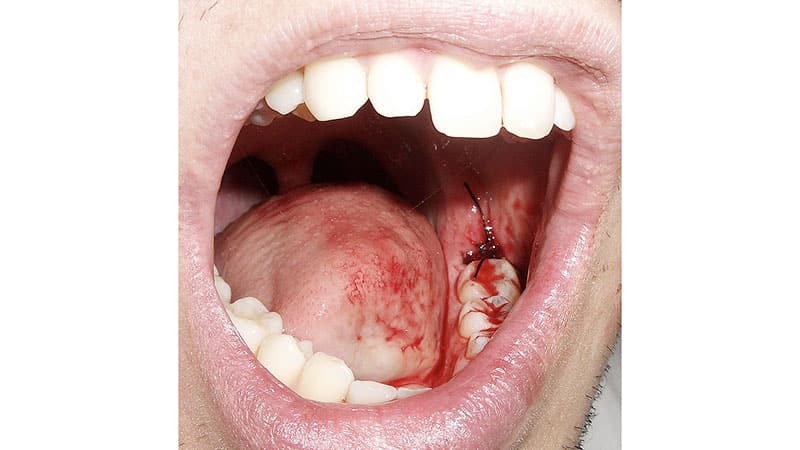Stoma: what is it, grooming stoma
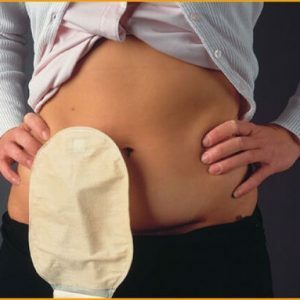 The stoma is called the artificial hole, which communicates the cavity of the organ( for example, the intestine, trachea) with the external environment.Imposition of the stoma is carried out for medical reasons.Sometimes this is a temporary measure and in the future stoma will be removed.In other cases, patients will always have to live with an ostomy, and therefore it is very important to learn how to take care of it properly in order to prevent complications.
The stoma is called the artificial hole, which communicates the cavity of the organ( for example, the intestine, trachea) with the external environment.Imposition of the stoma is carried out for medical reasons.Sometimes this is a temporary measure and in the future stoma will be removed.In other cases, patients will always have to live with an ostomy, and therefore it is very important to learn how to take care of it properly in order to prevent complications.
Varieties of stoma
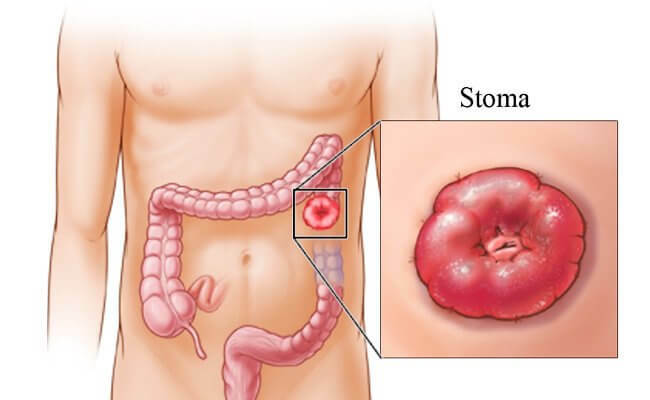
By and large, the stoma is placed on the hollow organ when it is obstructed, or when it is necessary to turn off the lower divisions. Depending on the organ in which the artificial hole was created, the following types of stoma are distinguished:
- Tracheostomy - the hole is superimposed on the trachea;Gastrostome - on the esophagus;
- Colostomy - on the large intestine;
- Ileostomy - on the small intestine;
- Epicystostomy is the bladder.
Tracheostoma
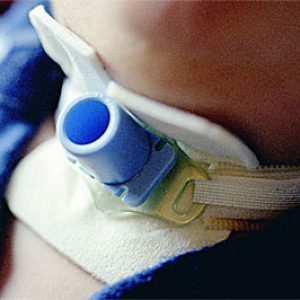 Obstruction of the upper respiratory tract is a life threatening condition.To restore patency form the tracheostomy
Obstruction of the upper respiratory tract is a life threatening condition.To restore patency form the tracheostomy
In most cases, tracheostomy is performed urgently in acute conditions, and when the airway patency is restored - the tube is removed and the wound is cicatrized. Less often tracheostom for medical reasons is left for good, in which case the patient and his relatives need to learn how to properly care for the tracheostomy.
If there is a message of the tracheal cavity with the external environment, the risk of getting microbes into the body increases significantly with the further development of infectious and inflammatory processes.In addition, the air inhaled through the tracheostomy is not moistened at all and does not warm up.Therefore, in the cold season, the tracheostomy should be covered with gauze, and in the hot season - with a damp napkin.Patients with tracheostomy should not engage in active sports, swim in the water.
Tracheostomy care
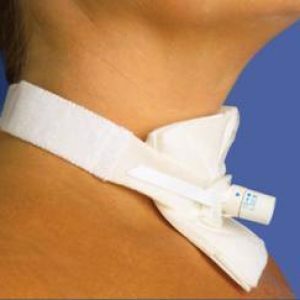 Tracheostomy requires regular maintenance.The tracheostomy structure is a tube of a larger diameter, into which a smaller diameter tube - the cannula - is inserted.So the needs to get the cannula out of the hole daily and clean it, after all, the slime accumulates in it.The cannula pulled from the outer tube is placed in a bowl with a 2% soda solution heated to 45 degrees and cleaned with a special brush.
Tracheostomy requires regular maintenance.The tracheostomy structure is a tube of a larger diameter, into which a smaller diameter tube - the cannula - is inserted.So the needs to get the cannula out of the hole daily and clean it, after all, the slime accumulates in it.The cannula pulled from the outer tube is placed in a bowl with a 2% soda solution heated to 45 degrees and cleaned with a special brush.
After this, the cannula should be rinsed under running water, dried with a sterile cloth and then wiped twice with a handkerchief moistened with 70 percent ethyl alcohol.At this time it is time to do a tracheostomy, the skin around it is wiped off with warm water, and also treated with anti-inflammatory ointments.
For the most comfortable penetration of the tube, it must be lubricated from the outside with glycerin and injected gently with screwing movement into the tracheostome.To prevent the trachea mucosa from drying out, two or three drops of glycerin are poured into it, and for liquefaction of sputum, 1 ml of a 0.9% solution of sodium chloride or 1 ml of trypsin.
Gastrostom
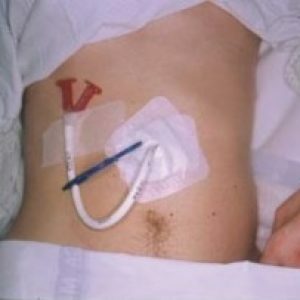 If the esophagus is obstructed, a person can not eat fully, because the food stuck in the esophagus and can not pass on.In such cases, a hole is placed on the gastric wall and sutured to the skin of the abdomen. A gastric tube is inserted into the stomach through a rubber tube that is attached to the stomach with a plaster.In order not to pour out the gastric contents, the tube is clamped with a clamp, and its lumen is covered with a napkin.
If the esophagus is obstructed, a person can not eat fully, because the food stuck in the esophagus and can not pass on.In such cases, a hole is placed on the gastric wall and sutured to the skin of the abdomen. A gastric tube is inserted into the stomach through a rubber tube that is attached to the stomach with a plaster.In order not to pour out the gastric contents, the tube is clamped with a clamp, and its lumen is covered with a napkin.
Feed the patient through the tube.Food should be high-calorie and easily digestible, soft or semi-solid consistency. The patient is thus fed four to six times a day.A portion of food for one intake is 400 ml.It goes without saying that food should be warm.
Before feeding, remove the clip from the tube and remove the napkin that closes the entrance.At the end of the tube, you need to insert the funnel, lifting it up.In the device gradually pour the cooked food, while watching whether the tube is tightly seated in the gastrostomy and whether the food is pouring past.At the end of feeding, you can pour a funnel of warm tea or a dog-rose to wash away the food left from the tube walls.The patient should be in a half-lying position for another half an hour.
Now you can remove the funnel, close the end of the tube with a clean cloth and apply the clamp back.After washing, the funnel should be washed under running water, and then boiled in a two percent soda solution for fifteen minutes.The washed funnel is dried and wiped dry.
Care for gastrointestinal tract
Regular hygienic procedures should be carried out in the field of gastrostomy to avoid skin irritation, the appearance of diaper rash.First of all, you need to peel off the plaster with clean hands, which fastens the tube to the skin of the abdomen.The bare skin around the stoma is treated with a tissue moistened in a solution of furacilin.After the skin dries, it needs to be lubricated with antiseptic ointment( zinc ointment, Lassar paste).Remains of unabsorbed ointment wipe with a napkin.Now you can attach the tube to the skin of the abdomen with a new plaster.
Intestinal stoma
Intestinal stoma is a hole in the intestine that has been drawn to the abdominal skin created surgically after removal of the part of the intestine .The operation of the ostomy is performed when the intestine is unable to function fully as a result of the disease.The main purpose of the stoma is to ensure the excretion of the contents of the intestine.
Intestinal stoma can be:
- Single-stem( when one hole in the intestine is removed from the abdomen);
- Double-barreled( with the removal of two trunks through the stoma).

In contrast, superimposed on the small intestine, called ileostomy, on thick - colostomy.To the stoma, the calico is attached, in which the intestinal contents are collected throughout the day.With ileostomy, stools from the intestine are observed almost constantly, they are liquid.With colostomy, the frequency of excrement is two to three times a day on average, with the masses being decorated.
Kalopriemniki are one- and two-component.One-component kalopriemniki are an adhesive plate and bag, which look like a single whole.Such bags should be changed when they are filled with intestinal contents to half.They are removed together with the glue plate.
Two-component kologopriemniki consist of two separate parts: an adhesive plate and a bag.That is, the glue plate can be left, and the bags can be changed.The bag is changed when it is half full.But the glue plate can be changed after three or four days.
The difficulty in caring for the intestinal stoma is the constant need to change the .Before manipulation it is necessary to lay a clean sheet or an oilcloth place where there will be a change of a kalospriemnika not to spoil furniture.
Care for intestinal stoma
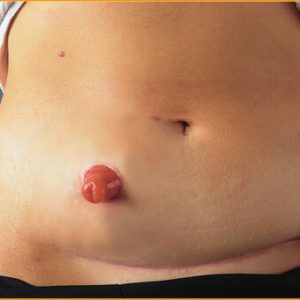 With washed hands, disconnect the device from the skin after a bowel movement.After that, the stoma and the skin around it are treated with warm water.You can use liquid soap, but antiseptic( especially spirestone) should be avoided.After water procedures, the skin is soaked with a clean towel and, if necessary, applied with an antiseptic ointment.After that, attach a new kalopriemnik.
With washed hands, disconnect the device from the skin after a bowel movement.After that, the stoma and the skin around it are treated with warm water.You can use liquid soap, but antiseptic( especially spirestone) should be avoided.After water procedures, the skin is soaked with a clean towel and, if necessary, applied with an antiseptic ointment.After that, attach a new kalopriemnik.
How can I glue a new calorimeter?First of all, you need to measure the size of the intestinal stoma with a measuring template.The hole on the calico should fit exactly the size of the stoma.It is necessary to attach a suitable template to the adhesive plate of the kalospriemnika, apply a ball-point pen to the tank and cut out the corresponding hole in it.Next, attach the stamping side to the stoma with the adhesive receptacle and press for better adhesion.You can also pull the bag slightly down to make sure it is well adhered.
Epicystosis
 If the normal outflow of urine from the bladder is violated, a high bubble cross section is made with the epicystostomy applied.A catheter is inserted into the formed hole, which is changed by the doctor every month.The end of the catheter is connected to the urine collection.If the patient is recumbent, the urine receiver is attached to the bed frame, if the person is active - the packet is attached to the leg.
If the normal outflow of urine from the bladder is violated, a high bubble cross section is made with the epicystostomy applied.A catheter is inserted into the formed hole, which is changed by the doctor every month.The end of the catheter is connected to the urine collection.If the patient is recumbent, the urine receiver is attached to the bed frame, if the person is active - the packet is attached to the leg.
The bag can be with a drain valve and without it .It needs to be emptied when it is half full.It is very convenient to use a urinal with a drain valve, when the pouch will be half full, just open the valve and let the urine go to the toilet. Urine receivers are also single- and reusable .When using reusable urine samplers, the bag should be washed after emptying it.
Care for epitsistostoma
You need to take care of the skin around the epicystostoma.With clean hands, carefully remove the adhesive, which secures the catheter to the skin of the abdomen.The catheter needs to be slightly deflected to the side and, without stretching it, wash it outside with warm water, and also wash the skin around the stoma.After that, dry the skin with a clean cloth and apply an antiseptic ointment if necessary.At the end of the procedure, the catheter is fixed with a new patch.
Grigorova Valeria, medical reviewer

